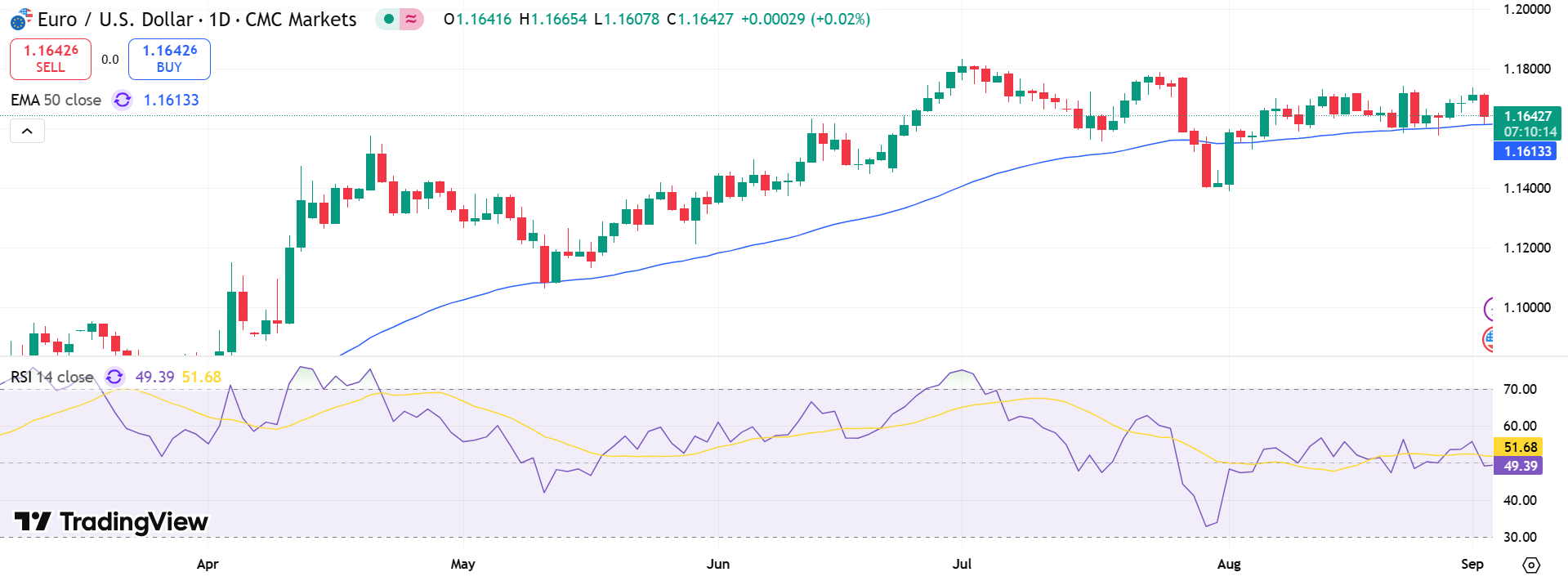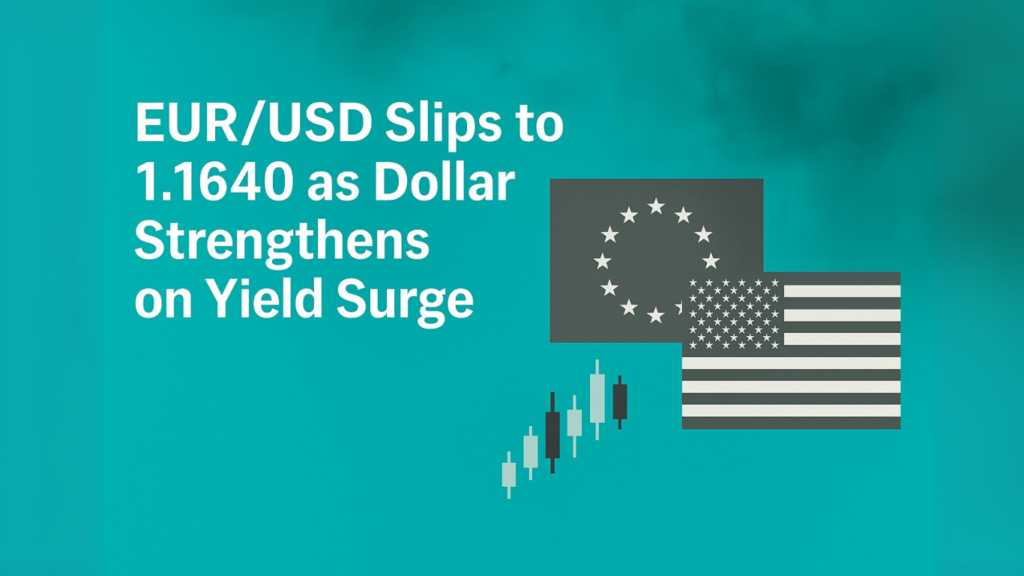The euro gave back part of its recent recovery on Tuesday, with EUR/USD sliding to the 1.1640–1.1630 range, its lowest level in four days. The move reflected renewed strength in the U.S. dollar, supported by firm Treasury yields and a broad risk-off tone.
The U.S. Dollar Index (DXY) climbed near 98.60, extending its advance across maturities. While the rebound in U.S. yields set the tone, sentiment was also shaped by ongoing tensions between Washington and the Federal Reserve, including President Donald Trump’s pushback against a recent court ruling declaring several of his tariffs illegal.
Despite the dollar’s rally, markets remain convinced that the Fed will ease policy this year. Traders are pricing in a possible rate cut as early as September, pending upcoming U.S. jobs and inflation data.
Euro Faces Technical Hurdles
EUR/USD remains confined to a broad 1.1400–1.1800 range, with resistance capped at the August high of 1.1742 and further barriers at 1.1788 and 1.1830. On the downside, support sits at the 100-day SMA of 1.1517, followed by the August low of 1.1391.
Momentum indicators point to caution. The Relative Strength Index (RSI) fell below the 50 threshold, signaling potential weakness, while the Average Directional Index (ADX) near 10 suggests a trend lacking conviction.
Key levels in focus:
- Resistance: 1.1742 (Aug high), 1.1788, 1.1830
- Support: 1.1517 (100-day SMA), 1.1391, 1.1210
This setup leaves the pair vulnerable to further pressure unless fresh catalysts emerge from the Fed or trade negotiations.
Political and Trade Risks Add Volatility
Beyond technicals, political and trade developments are weighing on the euro. In France, Prime Minister François Bayrou faces a September 8 confidence vote on his budget plan. With opposition parties pledging to vote against him, President Emmanuel Macron may be forced to reshuffle leadership or even call early elections.

Meanwhile, the U.S. extended its trade truce with China by 90 days, delaying new tariffs until November 10, while maintaining 30% duties on imports already in place. Washington also reached a deal with Brussels, cutting some tariffs in exchange for wider access to European markets.
On the central bank front, the ECB has signaled no rush to ease policy, with President Christine Lagarde pointing to steady growth. Futures markets now expect the ECB to hold rates until at least spring 2026.
According to CFTC data, speculative positioning reflects cautious optimism: non-commercial net longs in the euro rose to a four-week high of 123,000 contracts, while shorts also climbed, pushing open interest above 842,000 for a third straight week.


